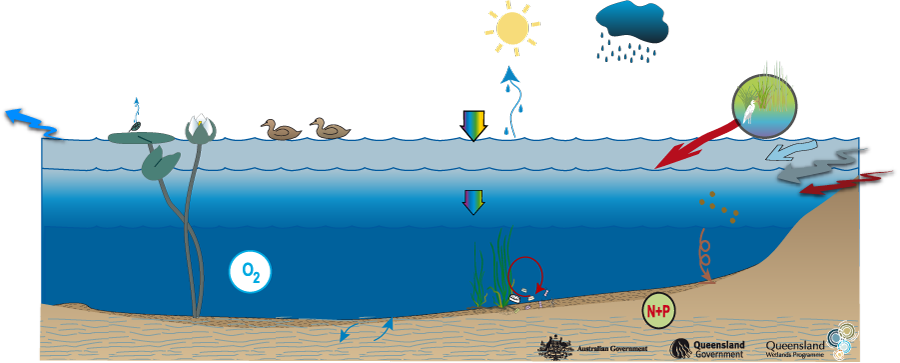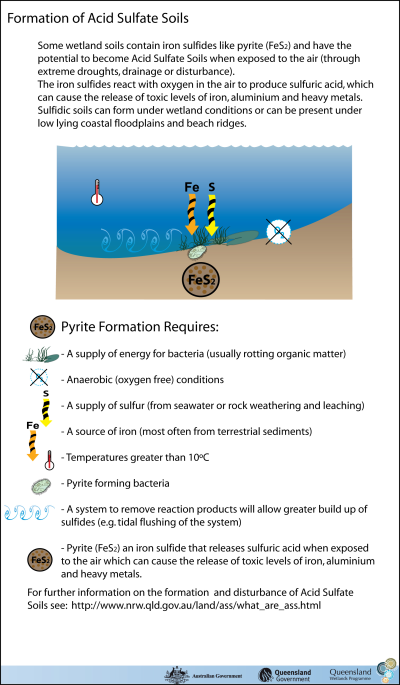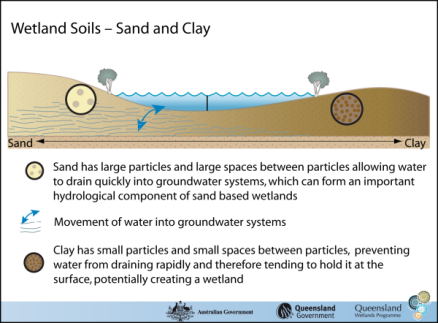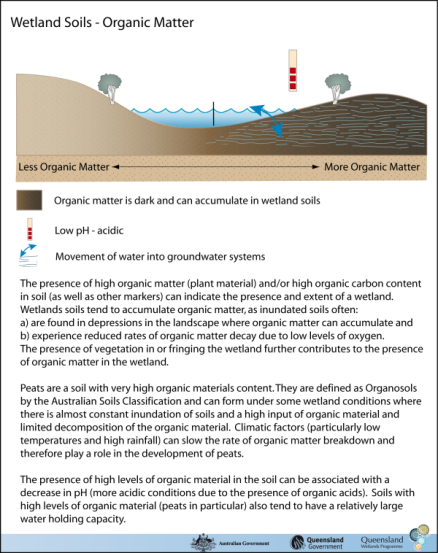|
|
Coastal and subcoastal floodplain lakeCoastal and subcoastal floodplain lake – Geomorphology Click on elements of the model or select from the tabs below The presence of high organic matter (plant material) and/or high organic carbon content in soil can indicate the presence and extent of a wetland. Wetlands soils tend to accumulate organic matter as inundated soils often: a) are found in depressions in the landscape where organic matter can accumulate, and b) experience reduced rates of organic matter decay due to low levels of oxygen. The presence of vegetation in or fringing the wetland further contributes to the presence of organic matter in the wetland. Peats are a soil with very high organic materials content. They are defined as Organosols by the Australian Soils Classification and can form under some wetland conditions where there is almost constant inundation of soils and a high input of organic material and limited decomposition of the organic material. Climatic factors (particularly low temperatures and high rainfall) can slow the rate of organic matter breakdown and therefore play a role in the development of peats. The presence of high levels of organic material in the soil can be associated with a decrease in pH (more acidic conditions due to the presence of organic acids). Soils with high levels of organic material (peats in particular) also tend to have a relatively large water holding capacity.
Last updated: 22 March 2013 This page should be cited as: Department of Environment, Science and Innovation, Queensland (2013) Coastal and subcoastal floodplain lake – Geomorphology, WetlandInfo website, accessed 8 May 2025. Available at: https://wetlandinfo.des.qld.gov.au/wetlands/ecology/aquatic-ecosystems-natural/lacustrine/coastal-floodplain-lake/geomorphology.html |

 — Department of the Environment, Tourism, Science and Innovation
— Department of the Environment, Tourism, Science and Innovation




